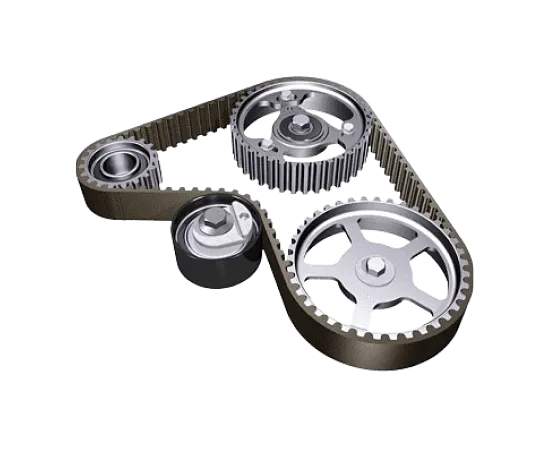Timing Belts

Overview
-
Timing belts are crucial components in internal combustion engines, synchronizing the rotation of the crankshaft and camshaft. Composed of rubber and reinforced with fibers like fiberglass or Kevlar, these belts ensure precise timing for engine valves, optimizing performance and fuel efficiency. They require periodic replacement to prevent catastrophic engine failure due to wear or breakage, typically every 60,000 to 100,000 miles depending on the manufacturer's recommendation. Regular maintenance and inspection are essential to ensure the reliability and longevity of timing belts in automotive applications.
-
In industrial machinery, timing belts serve similar functions, coordinating the movement of various components in manufacturing processes. They transmit power efficiently while maintaining precise timing, critical for accurate production cycles. Materials like neoprene and polyurethane are commonly used in industrial timing belts, offering durability and resistance to oil, heat, and abrasion. Routine maintenance schedules are imperative to prevent costly downtime and ensure optimal performance in industrial applications.
